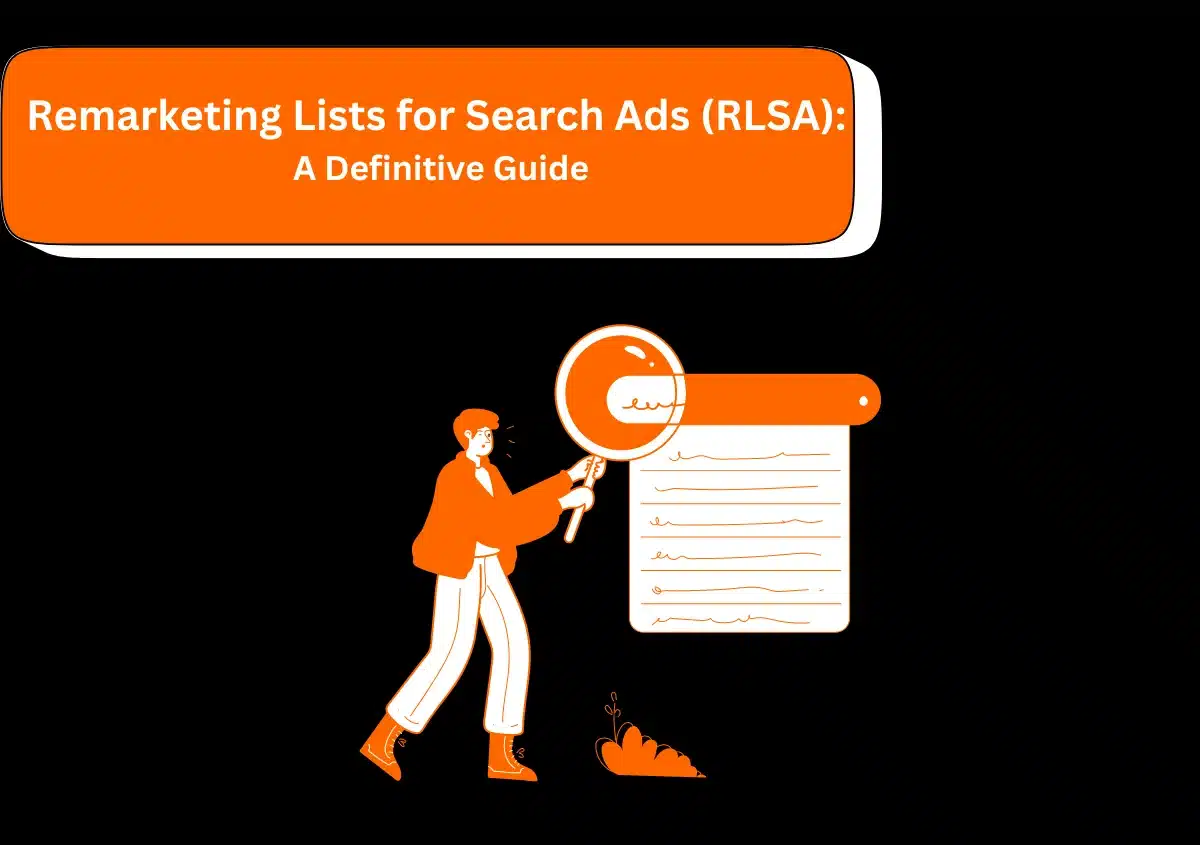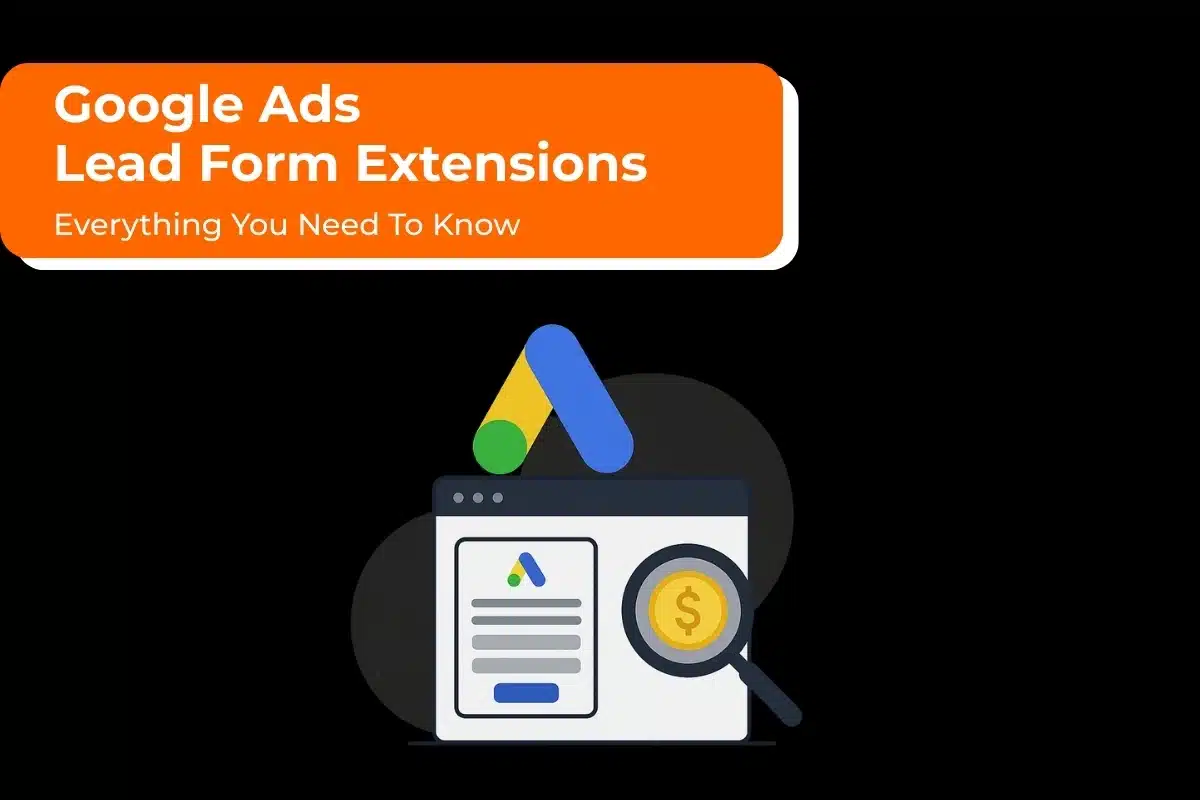Do you have a prospective customer who visited your website more than once and left without making a purchase?
Do you wonder where those leads are going and how to get them back?
Google’s Remarketing Lists for Search Ads (RLSAs) are just what you’re looking for.
Need Help with Google Ads?
What is RLSA in Google Ads?
As marketers, we know that the sponsored search landscape is evolving. The days of using keywords as the only targeting strategy are long gone. increasingly, advanced targeting strategies that complement keywords are becoming more common. RLSAs are still underutilized despite being around since July 2013. We’ll review some helpful strategy ideas to help you use them better.
Focus your remarketing ads on the prospects that are most valuable to you with these engagement-driven ads. This implies that you can target your ads precisely at those who are most likely to convert.
Moreover, Remarketing lists for search ads (RLSA) is a Google Ads feature that allows advertisers to customize their search ads for users who have already visited your website and pages.
This makes your business/brand more accessible to interested customers that you were previously unable to reach.
Here are two applications for RLSAs:
- Modifying the ad groups’ bids for individuals (remarketing lists) who use the keywords you are bidding while conducting Google searches.
- Configuring search ad groups so that they only display ads to users who are on your remarketing list and are using the keywords you are bidding for searches.
Remember that RLSAs and conventional display remarketing are two different things.
Though RSLAs may look like display remarketing on the search network, they aren’t.
The only similarity between display remarketing and RLSAs is that both rely on cookies to follow visitors and add them to lists that benefit the advertiser. Those lists are used differently for RLSAs than they are for conventional display remarketing.
Unlike traditional remarketing, which shows users ads while they browse the Google Display Network, RLSAs display text ads to users regardless of whether or not they are on your remarketing list. The terms you are bidding on in your search ads still need to be used by users actively searching on Google.
Read Also:- How to Set Up Remarketing Campaign in Google Ads?
How Do RLSAs (Remarketing Lists for Search Ads) Work?
RLSAs track website visitors through the use of cookies. Your ads have a higher chance of showing up in these visitors’ search results when they leave your website and use Google. By doing this, you can stay in touch with your visitors long after they have left your website.
This is the specific way they operate:
By including a little piece of code (referred to as a tag) on your website, you can connect to the RLSAs’ audience. With this tag, the audience is automatically added to lists according to the actions they perform on your website.
You may bid on these segments and include them in your marketing campaigns when the tags are posted. The audience then receives personalized ads based on their past visits to your website. This only happens when they continue using certain key phrases on Google search or other Google Display Network websites.
Need Help with Google Ads?
Advantages of Using Remarketing Lists for Search Ads
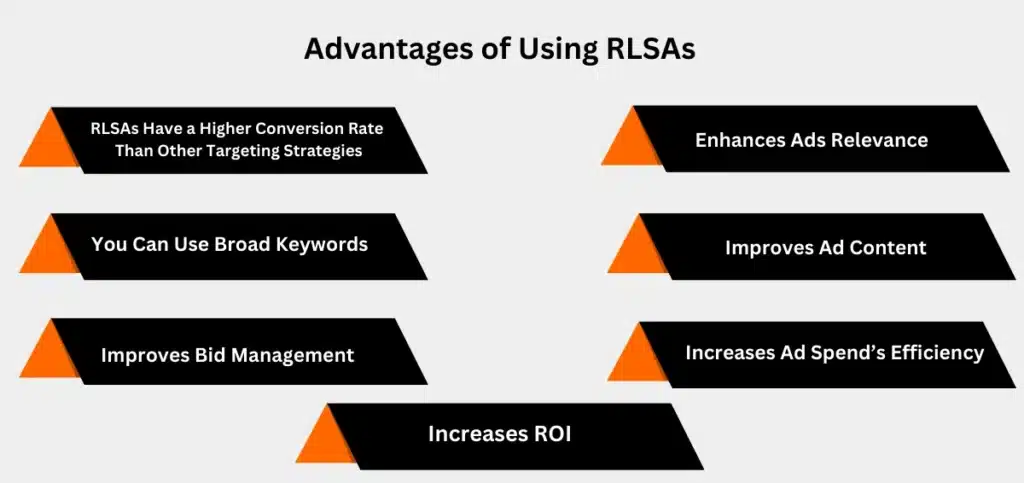
When used properly, RLSAs help you focus your ad spending on a highly lucrative market and improve your ad campaigns. Here are a few benefits you should know.
1. RLSAs Have a Higher Conversion Rate Than Other Targeting Strategies
You can boost consumer engagement by customizing the ad content. By using search advertisements, you may boost win-back potential and provide customization. Retargeting ads had an average lift of 1,046% according to ComScore research that examined 103 campaigns from 39 different advertisers across 7 sectors.
2. Enhances Ads Relevance
RLSAs let you target consumers with relevant ad text that is tailored to their individual website behaviors.
This gives the user a more tailored and interesting ad experience—which may increase click-through rates and conversions.
3. You Can Use Broad Keywords
Increasing your reach using wide keywords can get you more conversions. You can also test several campaigns or ad groups for the keywords you wish to explore using RLSAs. Then, you can see whether they increase conversion rates or not.
4. Improves Ad Content
You can write tailored ad text for every audience segment using RLSAs.
The ads that provide a limited-time special or discount to users who have abandoned their shopping carts could entice them back to your website and get them to complete the purchase.
5. Improves Bid Management
RLSAs allow you to effectively segment and bid on particular audience segments.
Consider the following two sample audiences:
- First audience: Those who visited your site but did not make a purchase
- Second audience: Decision-making potential leads who have viewed your services pages.
Since the second audience is far more involved than the first audience, offering discounts or promotions to them would be more beneficial.
If you’re targeting “monetary gain” transactional keywords in your “Audience 2” ad group at this point in your RLSAs campaign, we suggest pushing to dominate the search ad position with a high bid!
The first audience is still in the “browsing” stage. They should be sent up the conversion funnel slower than those “warmer” second-audience prospects.
Here, focusing your spending, bidding, and messaging on a higher-value audience should be your priority.
At the end of the decision-making process, you want to be raising bids for commercial/ transactional keywords.
6. Increases Ad Spend’s Efficiency
By eliminating users who are not adding value, you could target valuable and qualified leads with RLSAs and save on ad spending. You could also modify your remarketing lists to exclude those who have opted out of receiving ads. This will reduce the cost of your ad campaigns.
7. Increases ROI
You may not reach an audience who are farther along in their brand awareness journey. Those who have expressed interest in your services or products are more likely to convert if you limit your targeting to them.
When compared to non-RLSAs’ Search ads, which are more widely targeted to all users, this may yield a larger return on investment.
Read Also:- How to Set Manual CPC in Google Ads?
How can I Set up Ad Campaigns for Google RLSAs?
RLSAs’ groups are easy to set up. It all boils down to your ad groups’ Targeting or Observation audience choices.
Note: Your website has to have a remarketing tracking code (imported from Google Analytics or the Google Ads tag).
Let’s now learn how to set it up.
- First, we must create your Search Campaign to create your RLSAs.
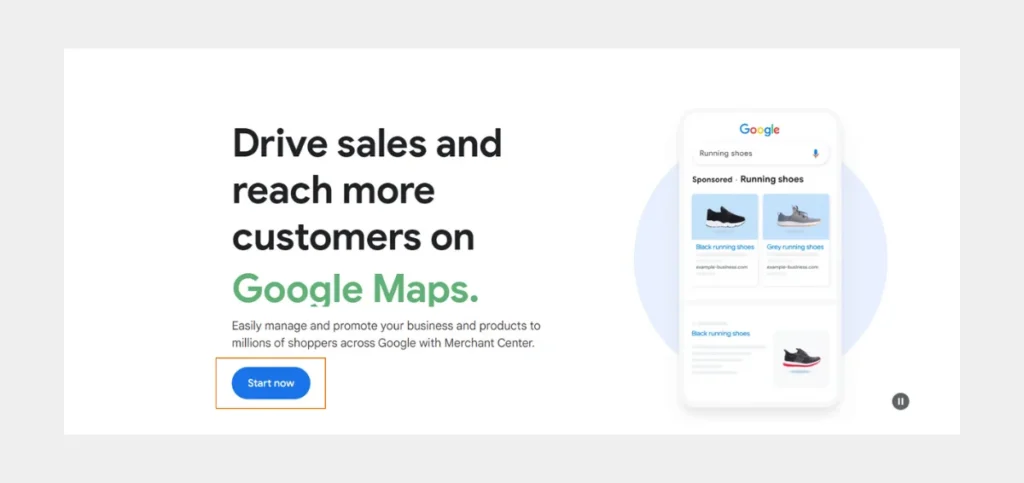
- Next, begin with “Create a campaign without a goal’s guidance” once you click this.
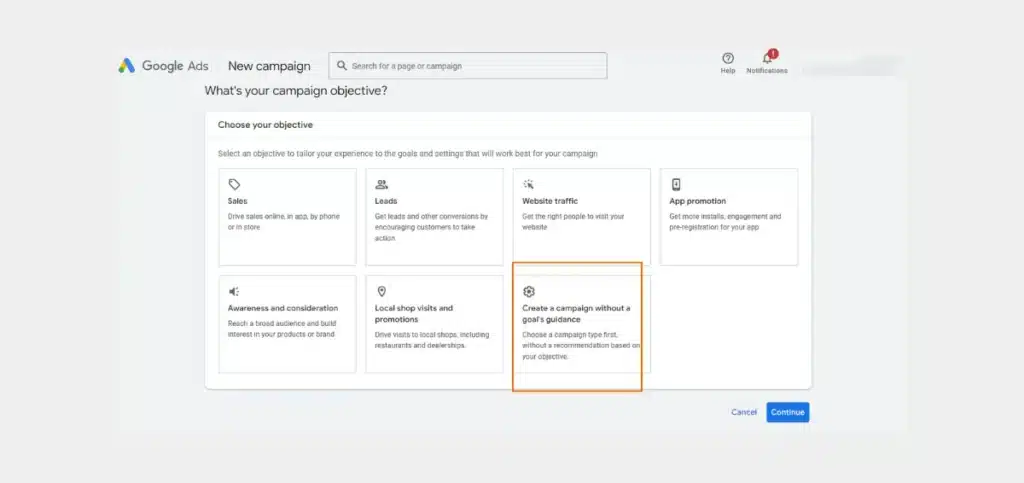
- Now, Choose the ‘Search Campaign‘ option.
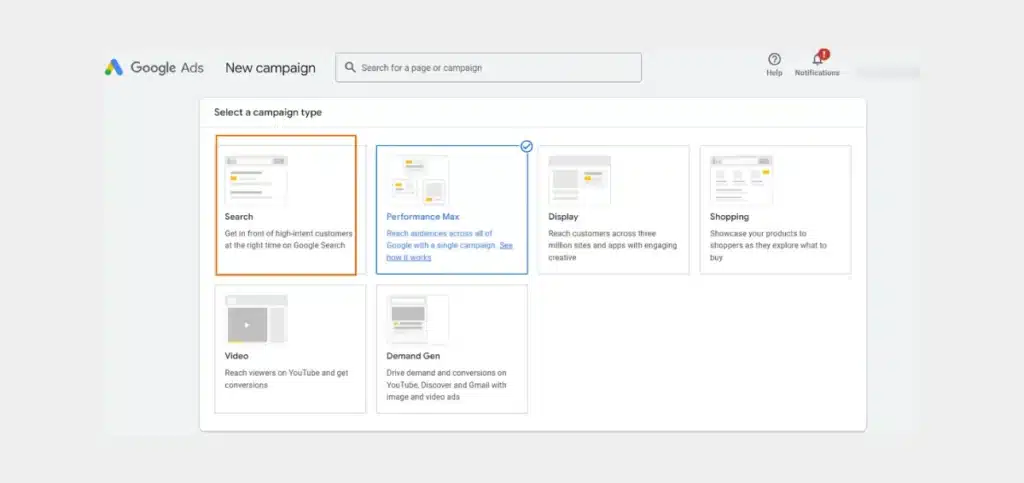
- Click “continue” without giving this section too much thought.
- Give a name to your search campaign.
**Note that this has “Sneaky Settings.” As you can see, the Display Network has been chosen automatically by Google. Because you are expanding your search campaigns outside of Search Network, deselecting these choices will result in a higher campaign expense amount.
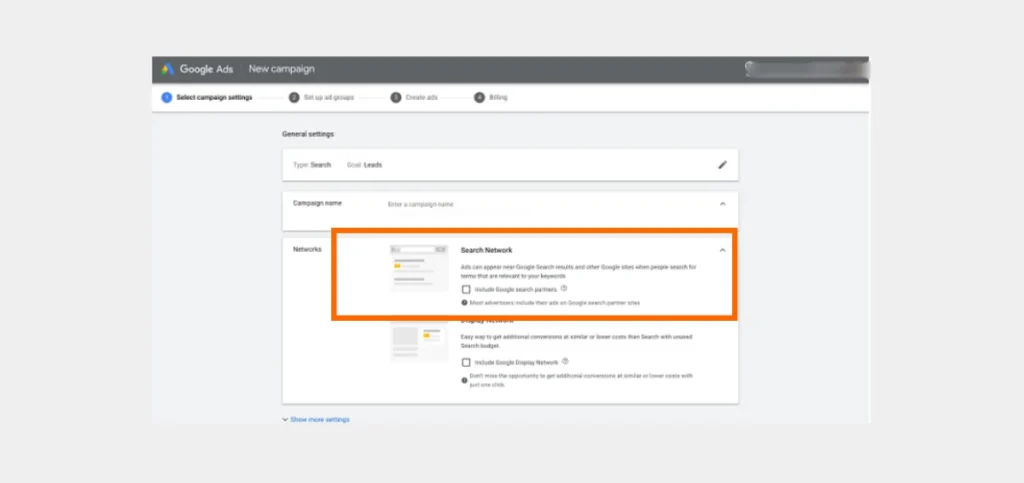
Regarding the extra settings, as they mostly rely on your business, you may worry about this later: Decide where you want to aim. A country, as well as an area or city, could be the target or exclusion.
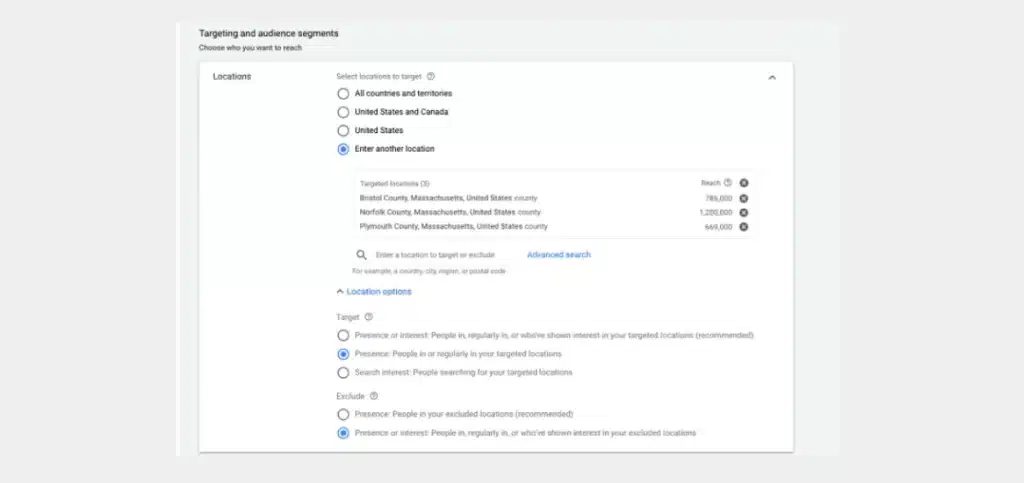
- This is where you set the audiences for your Search Campaigns.
- You will now have two options after selecting that one: targeting and (strongly advised) observation. We advise you to employ targeting since it will help you focus your campaign’s reach on the targeted audiences.
- Select “How they have interacted with your business (Remarketing and similar audiences)” after selecting “Browse.”
- After selecting your desired audiences, click ‘Website Visitors‘
**You may get an estimate of the audience’s projected visitor count by hovering over it.
- Decide and set your daily spending limit.
- After deciding on your bid strategy, choose Manual CPC. Click the “Or, select a bid strategy directly (though not recommended)” to view this option.
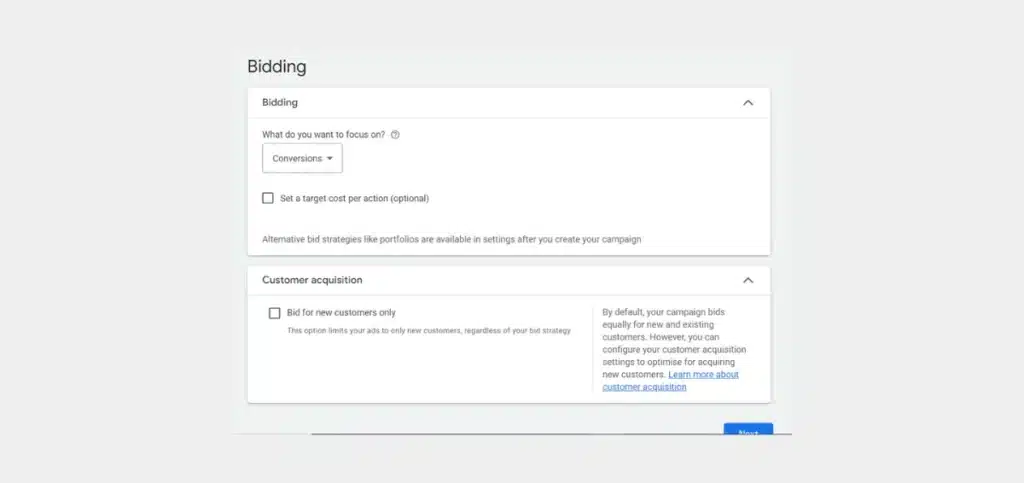
**You can choose to play around with the available ad extensions after that. Then, click “Proceed.”
- Give a unique name to your Ad group.
- Decide which keywords to target. It is not advised to place too many distinct keyword topics within an ad group. Just include relevant keywords; for example, if your ad group is about “Glycerin lotion,” you don’t include irrelevant terms like “Glycerin soap” or “Glycerin facewash.” Once you have entered your relevant keywords, select “Save and Continue.”
- Create your ad and save it.
- Your ad will show up here when you’ve finished designing it:
- Go to Audiences in the left-hand corner to verify the audiences you’ve just established. There, you should see the list of active audiences that the campaign is using.
And that’s it! That being said, making a remarketing list for Search Ads is simple.
Read Also:- How to Improve Conversion Rate in Google Ads?
Best Practices for Your RLSAs Campaign
1. Before You Start, Know Your Audience.
It’s important to know who your target audience is before making an RLSAs list and launching them. For more targeted advertising, consider developing buyer personas and customer journey maps to find out what your target audience is thinking about at each stage of the buying process.
You can also adjust your bids according to the demographics of your audience. When users search on Google while logged in, segment and modify their bids and lists according to information accessible, such as gender and age.
2. Adjust Bids Based on User Stage.
You should apply RLSAs here because, if your trip maps are correct, you probably already know which visitors will convert based on their activities. Use the codes on your website to monitor the user’s journey and increase your bid for those who are closer to making a purchase, or conversion.
3. Align Message with User Behavior.
Make sure the message in your RLSAs corresponds with the activity that you would like the user to perform, or with the action that brought them to your list in the first place. For instance, you might publish an ad alerting a visitor of an impending sale if they were to land on a price page. This can be done by creating custom tags in your Google Ads account that record the activity that the user takes and then adjusting your bids to display appropriate content in response to that action.
4. Give Complementary Offers as an Upsell to Users Who have Converted.
Although you might not consider using RLSAs on converted users, it’s a valuable tactic if you provide offerings that, when combined, improve experiences. If you sell cameras, for instance, you wouldn’t market camera gear to visitors who haven’t yet registered on your website. But when a user buys anything, you could try to upsell them by showing them ads for camera gear—you need to have a special list of users who have made that transaction before. Remember that not all converted users are worth remarketing using RLSAs.
5. Make a Broad Term Bid.
In addition to bidding on phrases that are specifically connected to your business, it makes sense to bid on general phrases that are associated with your business and that your target audience may also use. You could bid on competitor brand names. For instance, if you sell Baby products, your prospects are likely researching them before making a choice. If you decide to go this way, ensure you’re not overspending on more general phrases because your business-related keywords are the most relevant.
Final Thoughts
The goal of Google’s RLSAs (Remarketing lists for search ads) campaigns is to show your search ads to prospects who are in your market. This can thereby boost conversions, maximize ROAS, and more effectively move potential customers through the funnel.
Website Pandas is your remarketing partner, whether you’re trying this feature for the first time or want to improve your current campaigns. Contact our Google ads specialist.
Need Help with Google Ads?

